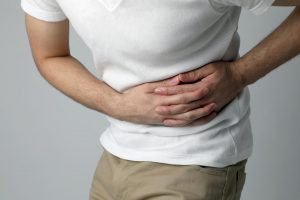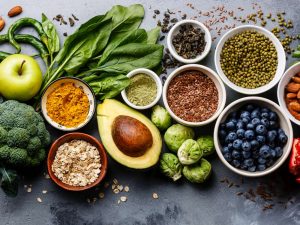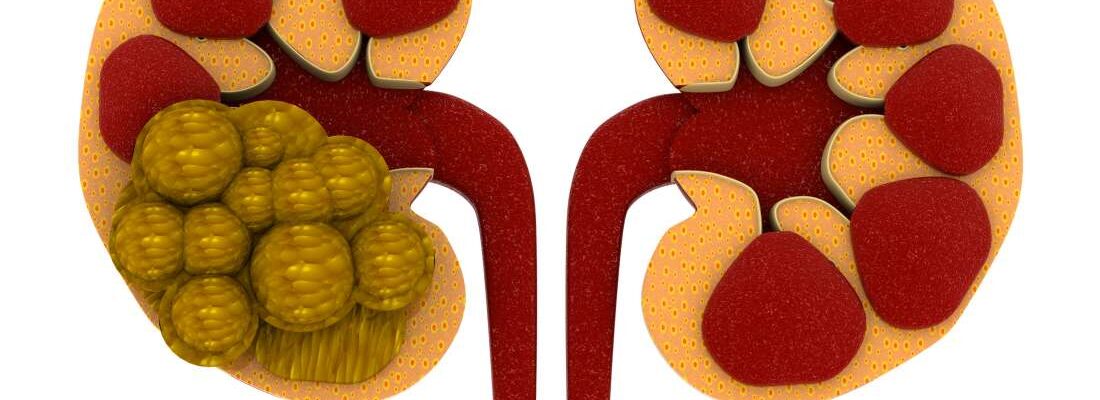Summary
Kidney stones, or nephrolithiasis, occur when dissolved minerals in the urine crystallize and form solid masses within the kidneys. This formation process, also called urolithiasis, can be attributed to a combination of Greek and Latin roots: “nephros” (kidney) and “lithos” (stone) in Greek, and “urina” (urine) in Latin, reflecting the involvement of urinary minerals in stone formation.
The primary cause of kidney stones is dehydration, which prevents minerals in the urine from dissolving completely. As a result, these minerals can accumulate and form stones.
Symptoms of kidney stones include intense pain in the sides, lower back, and abdomen, painful urination, and cloudy urine that may occasionally contain blood. Treatments include shockwave therapy to break down stones, pain relievers, and medications that help dissolve smaller stones.
Table of Contents
Symptoms of Kidney Stones

Symptoms of kidney stones may not appear until the stones begin to move within the kidneys or pass into the ureter (the tube connecting the kidneys to the bladder). When this occurs, the following symptoms may be experienced:
- Severe pain in the side and back, below the ribs. This intense pain, often referred to as “renal colic,” is caused by the stone moving through the urinary tract.
- Pain spreading to the lower abdomen and groin. As the stone moves, the pain may radiate to the lower abdomen and groin areas.
- Fluctuating pain that intensifies. Pain can come and go but often becomes more severe and consistent as the stone travels through the urinary tract.
- Pain during urination. Passing a stone through the ureter and urethra can be extremely painful, especially while urinating.
- Red, pink, or brown urine. Blood in the urine, known as hematuria, can occur due to irritation or scraping from the stone.
- Cloudy or foul-smelling urine. Infection or concentrated minerals may cause the urine to appear cloudy and have a strong odor.
- Nausea and vomiting. The intense pain from kidney stones often triggers nausea and vomiting.
- Frequent urination. A persistent urge to urinate, especially in smaller amounts, is common with kidney stones.
- Fever and chills. A fever indicates an infection, which can develop if a stone obstructs the urinary tract.
- Urinating in small amounts. Difficulty passing urine, or urinating in small amounts, may occur due to blockages caused by the stone.
Recognizing these symptoms early and seeking medical attention can help manage kidney stones effectively and prevent complications.
Types of Kidney Stones
Kidney stones are formed from different substances in the body, each creating a specific type of stone. Here are the primary types of kidney stones:
- Calcium Stones. Calcium stones are the most common type of kidney stone and are often made from calcium oxalate. Occasionally, they may be composed of calcium phosphate or maleate. Foods rich in oxalate, such as chocolate, nuts, potato chips, beets, and spinach, can contribute to the formation of these stones. However, getting enough dietary calcium can actually help prevent stone formation, as calcium binds with oxalate in the digestive tract, reducing the amount that reaches the kidneys.
- Uric Acid Stones. Uric acid stones are more common in men and can occur in people with high levels of uric acid, such as those with gout or those undergoing chemotherapy. These stones form when urine is highly acidic, causing uric acid to crystallize in the kidneys.
- Struvite Stones. Struvite stones are more common in women with recurrent urinary tract infections (UTIs). These stones can grow large, often causing blockages in the urinary tract and leading to kidney infections. They form when bacteria in the urinary system produce substances that increase urine pH, encouraging stone formation.
- Cystine Stones. Cystine stones are rare and occur in people with a genetic condition known as cystinuria, which causes the amino acid cystine to leak from the kidneys into the urine, leading to stone formation. Cystine stones can affect both men and women and are often recurrent due to the genetic nature of the condition.
Understanding the type of kidney stone is essential for choosing effective treatment and preventing recurrence.
Diagnostic Procedures for Kidney Stones
Diagnosing kidney stones involves a variety of tests to confirm the presence of stones, determine their size and location, and identify any underlying causes. Here are the main diagnostic procedures:
- Urinalysis. A urine test checks for elevated levels of stone-forming substances, such as calcium, oxalate, and uric acid. It can also detect blood in the urine, which often indicates a kidney stone.
- Blood Tests. Blood tests help assess kidney function and measure levels of calcium, uric acid, and other substances that may contribute to stone formation. These tests can also identify potential underlying conditions that increase stone risk.
- Imaging Tests. Imaging provides a clear view of the urinary tract to detect the size, location, and shape of kidney stones:
- CT Scan. A non-contrast CT scan is the most common imaging test for kidney stones, offering detailed images to help locate even small stones.
- Ultrasound. Ultrasound is a radiation-free option, often used in pregnant women or for follow-up imaging, though it may not detect all types of stones.
- X-Ray (KUB – Kidneys, Ureter, and Bladder). An X-ray can sometimes reveal larger stones but is generally less effective than a CT scan for smaller stones.
- 24-Hour Urine Collection. For patients with recurrent kidney stones, a 24-hour urine collection test measures the volume and composition of urine over a full day. This test provides detailed information about stone-forming substances, helping to develop a targeted prevention plan.
- Stone Analysis (if available). If a stone has been passed or removed, it can be analyzed in a laboratory to determine its composition (calcium, uric acid, struvite, or cystine). Understanding the type of stone can guide dietary and medical interventions to prevent future stones.
These diagnostic procedures enable healthcare providers to assess kidney stones comprehensively, determine the best treatment approach, and prevent recurrence.
Complications of Untreated Kidney Stones
If left untreated, kidney stones can lead to serious complications, especially if they obstruct the urinary tract or cause recurrent infections. Key complications include:
- Urinary Tract Obstruction. Large stones can block the flow of urine, causing severe pain and leading to a backup of urine in the kidney (hydronephrosis). This can damage the kidney tissue over time.
- Kidney Infections. Stones can create a breeding ground for bacteria, increasing the risk of kidney infections (pyelonephritis). Symptoms include fever, chills, and pain, and untreated infections can spread to the bloodstream, causing sepsis—a life-threatening condition.
- Chronic Kidney Disease (CKD). Persistent blockages and infections due to kidney stones can lead to scarring and reduced kidney function over time. Recurrent stones, especially in people with conditions like diabetes or high blood pressure, increase the risk of CKD.
- Kidney Failure. In severe cases, untreated stones can lead to kidney failure, especially if both kidneys are affected. This may require dialysis or kidney transplant to restore kidney function.
- Severe Pain Episodes. Passing stones through the urinary tract can cause excruciating pain, which may become recurrent if stones continue to form. These painful episodes, often called renal colic, can significantly impact quality of life.
- Urinary Incontinence. Prolonged or recurring kidney stones can lead to urinary incontinence, particularly if the stones obstruct the bladder or urethra, affecting bladder control.
Early diagnosis and management of kidney stones are essential to prevent these complications and protect long-term kidney health.
Causes of Kidney Stones
Kidney stones do not have a single, definitive cause. Instead, a combination of factors can increase the risk of stone formation.
Kidney stones form when certain substances, such as calcium, cystine, uric acid, and oxalate, accumulate in concentrations that exceed the liquid available to dissolve them. This imbalance leads to crystallization and stone formation in the kidneys.
The formation of kidney stones may be influenced by the following factors:
- High intake of stone-forming foods. Consuming foods rich in calcium, oxalate, and uric acid, such as nuts, chocolates, shellfish, and certain leafy greens, can raise the risk of kidney stones, especially if these foods are consumed in large amounts.
- Inadequate water intake. Insufficient hydration concentrates urine, making it harder to dissolve minerals and increasing the risk of stone formation. Drinking plenty of water helps dilute substances in the urine and reduce stone risk.
- Lack of stone-inhibiting substances in urine. Some natural compounds in urine, like citrate, help prevent stone formation by binding to minerals. A lack of these substances may make a person more prone to developing kidney stones.
These factors contribute to an environment in which kidney stones are more likely to form. Maintaining proper hydration and a balanced diet can help reduce the risk.
Prevention of Kidney Stones

Preventing kidney stones can be relatively simple with the following strategies:
- Drink plenty of water. Staying well-hydrated is one of the best ways to prevent kidney stones. Drinking sufficient water helps maintain regular urination, which flushes out minerals and reduces the concentration of stone-forming substances in the kidneys.
- Consume citrate-rich juices. Beverages rich in citrate, such as lemon juice, ginger ale, lemon-lime soda, and citrus fruit juices, help prevent stones. Citrate can bind to calcium and other minerals, reducing the chance of stone formation.
- Moderate intake of oxalate-rich foods. Foods high in oxalate, such as spinach, nuts, and chocolate, as well as diets high in protein and salt, should be consumed in moderation. Excessive amounts of these substances can increase the risk of kidney stones.
- Medications. For individuals at high risk or with a history of kidney stones, doctors may prescribe medications that help prevent stone formation by reducing levels of stone-forming substances in the urine.
By following these preventive measures, individuals can reduce their risk of developing kidney stones and support overall kidney health.
Risk Factors for Kidney Stones

While anyone can develop kidney stones, certain factors increase the likelihood of developing this condition. Key risk factors include:
- Gender and age. Kidney stones are more common in men than in women, and they tend to occur most frequently in individuals between the ages of 30 and 50.
- Previous history of kidney stones. Individuals who have had kidney stones before are at higher risk of developing them again, especially if preventive measures are not taken.
- Medications. Certain medications can increase the risk of kidney stones. For example, topiramate (Topamax), which is used to treat seizures and migraines, has been linked to a higher likelihood of stone formation.
- Vitamins and supplements. Excessive intake of vitamin D and calcium supplements may contribute to the development of kidney stones, as they increase calcium levels in the body, which can crystallize and form stones.
Additional risk factors for kidney stones include:
- High intake of protein-rich and salty foods. Diets high in animal protein and sodium increase the risk of stone formation by increasing calcium and uric acid levels in the urine.
- Lack of physical activity. A sedentary lifestyle may lead to kidney stone formation by affecting calcium absorption and urinary balance.
- Obesity. Excess body weight can alter urinary composition, increasing the risk of kidney stones.
- Hypertension. High blood pressure can impact kidney function and increase stone risk.
- Chronic diarrhea. Recurrent diarrhea can lead to dehydration and mineral imbalances, raising the risk of kidney stones.
- Intestinal conditions. Disorders affecting the digestive tract, such as Crohn’s disease, can impact mineral absorption and lead to kidney stone formation.
Being aware of these risk factors and making lifestyle adjustments, such as dietary changes and staying hydrated, can help reduce the risk of kidney stones.
Kidney Stones FAQs
- What are kidney stones?
Kidney stones are hard deposits made of minerals and salts that form inside the kidneys. They develop when certain substances in the urine, such as calcium, oxalate, and uric acid, crystallize and harden. - What causes kidney stones?
Kidney stones can be caused by dehydration, high intake of stone-forming foods (such as those high in calcium oxalate), certain medications, and health conditions like gout and urinary tract infections. - What are the symptoms of kidney stones?
Symptoms include severe pain in the side and back, pain that spreads to the lower abdomen and groin, painful urination, blood in the urine, cloudy or foul-smelling urine, nausea, vomiting, and frequent urination. - How are kidney stones diagnosed?
Kidney stones are typically diagnosed through imaging tests like CT scans, ultrasounds, or X-rays, along with urinalysis and blood tests to assess mineral levels and kidney function. - Can kidney stones pass on their own?
Yes, small kidney stones can often pass on their own with adequate hydration and pain management. Larger stones may require medical treatment, such as shockwave therapy, or surgical removal. - How are kidney stones treated?
Treatment may involve pain relievers, increased water intake, medications to help dissolve certain types of stones, shockwave lithotripsy (to break up stones), or surgery in severe cases. - Can kidney stones recur?
Yes, kidney stones can recur, especially if preventive measures are not taken. A history of kidney stones increases the risk of future stone formation. - Who is at higher risk of developing kidney stones?
People with a family history of kidney stones, individuals who are dehydrated, those with diets high in salt and protein, and people with certain medical conditions like obesity, diabetes, or gout are at a higher risk. - Are there dietary changes that help prevent kidney stones?
Yes, drinking plenty of water, reducing sodium and oxalate-rich foods, and consuming citrate-rich foods like citrus fruits can help prevent kidney stones. - When should I see a doctor for kidney stones?
Seek medical attention if you experience severe pain, blood in the urine, fever, chills, difficulty passing urine, or any signs of infection. Prompt treatment can prevent complications and help manage pain effectively.
These FAQs provide a foundation for understanding kidney stones, their causes, prevention, and treatment options to manage the condition effectively.


